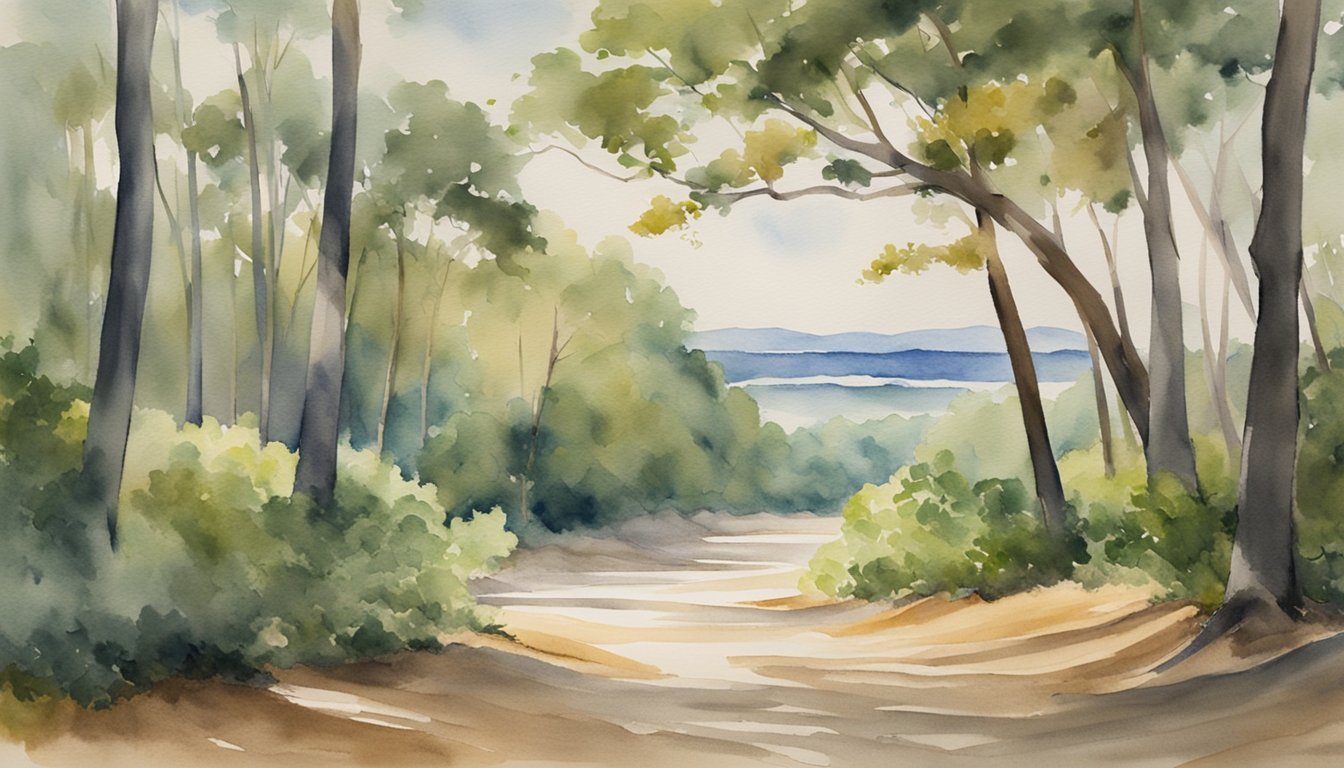Geography and Climate of South Carolina

Landforms and Regions
South Carolina, also known as the Palmetto State, is located in the southeastern United States, sharing its borders with Georgia to the southwest, North Carolina to the north, and the Atlantic Ocean to the east. The state’s geography varies from the mountainous region of the Blue Ridge in the northwest to the flat coastal plains in the southeast.
There are four major regions in South Carolina: the Blue Ridge, Piedmont, Sandhills, and Coastal Plain. The Blue Ridge area consists of the Blue Ridge Mountains, with the highest point being Sassafras Mountain, which stands at an elevation of 3,560 feet. The Piedmont is characterized by rolling hills and forms an elevated plateau. The Sandhills region acts as a transition zone between the Piedmont and the Coastal Plain, and is the remaining evidence of an ancient coastline. The Coastal Plain can be further divided into two regions: the Lowcountry, which consists of marshy wetlands and barrier islands like Hilton Head, and the outer Coastal Plain, which consists of flat land with sandy soils.
The official state tree of South Carolina is the Sabal Palmetto, and the state flower is the Yellow Jessamine.
Climate Patterns
South Carolina’s climate is classified as humid subtropical due to its geographical location. Rainfall is abundant and distributed fairly evenly throughout the year. The state experiences hot and humid summers, coupled with mild winters, which sometimes feature below-freezing temperatures.
Temperatures vary across the state due to differences in altitude. The southeastern part of South Carolina experiences an oceanic climate with milder winters, while the Blue Ridge Mountains in the northwest have cooler temperatures and occasionally cold winters. In addition to varied temperatures, there is also a risk of natural disasters such as earthquakes, mainly along the coast.
Overall, South Carolina offers a diverse range of geographical features and climate patterns, making it an interesting location for both residents and visitors alike.
What are the main differences between the attractions in South Carolina and South Dakota?
South Carolina boasts vibrant coastal attractions, including stunning beaches and historical landmarks, while South Dakota features breathtaking landscapes like the Badlands and Mount Rushmore. Each destination offers unique experiences. To fully appreciate the latter, you can discover intriguing facts about south dakota that showcase its rich cultural history and natural wonders.
History and Culture
Historical Events and Battles
South Carolina has a rich history, dating back to the earliest human habitation by Native American tribes such as the Catawba, Cherokee, Congaree, and Yamasee. European exploration began when the Spanish arrived in the 16th century. The first permanent English settlement was established in 1670 in what would later become Charleston. The colony was named Carolina after King Charles I and later divided into North and South Carolina during the reign of King Charles II.
South Carolina played a significant role in the American Revolution, with numerous battles taking place within its borders. The Battle of Sullivan’s Island, which led to the construction of Fort Moultrie, became an early emblem of the Patriots’ resistance against the British.
South Carolina was also the first state to secede from the United States in 1860, leading to the American Civil War. The first shots of the war were fired at Fort Sumter in Charleston Harbor in 1861. Several key battles, including the Battle of Charleston, took place in South Carolina. The state’s decision to secede and its prominent role in the Civil War showcases its fierce independence and resilience.
Cultural Heritage and Demographics
South Carolina’s cultural heritage is a blend of influences from its Native American, European, and African American history. The Gullah people, descendants of enslaved Africans who have managed to preserve their cultural identity throughout the years, are an essential part of the state’s demographic tapestry. Today, they continue to celebrate their heritage through festivals, arts, and storytelling.
The state’s European roots are evident in its architecture, particularly in cities like Charleston, where historic churches and preserved antebellum mansions can still be found. English settlers introduced rice, indigo, and cotton crops to the region, shaping the landscape and economy for centuries to come.
Tourism plays a significant role in South Carolina’s economy, with popular destinations such as Myrtle Beach attracting millions of tourists annually. The state’s climate and Atlantic Ocean coastline make it an ideal destination for beachgoers and outdoor enthusiasts alike. The Palmetto tree, symbolizing the state’s historical connection to fortifications in the Revolutionary War, is a ubiquitous symbol of South Carolina’s pride and identity.
South Carolina has experienced various demographic shifts throughout its history. From its early Native American tribes, European settlers, and enslaved African Americans, to a contemporary population with a mix of white, African American, and other racial and ethnic backgrounds, the state continues to evolve and grow. Its history, culture, and beautiful natural landscapes make South Carolina an intriguing and dynamic place.

